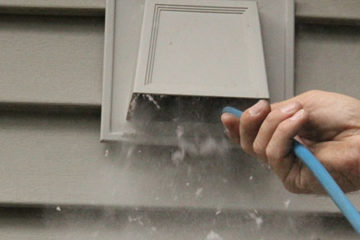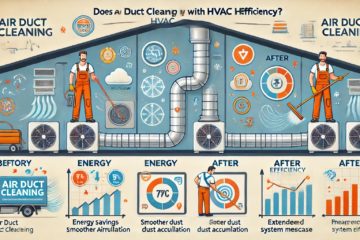If you’re dealing with a blower door test, you’ll often hear the term ACH50. For those unfamiliar with energy efficiency or home performance testing, this acronym might seem confusing. However, understanding ACH50 is crucial for homeowners, builders, and anyone aiming to lower energy costs and improve indoor air quality. Let’s break down what ACH50 means, why it matters, and how it affects your home’s energy efficiency.
What is ACH50 in Blower Door Testing?
ACH50 stands for Air Changes per Hour at 50 Pascals. It measures how many times the air inside a building gets replaced with outside air in one hour, under a pressure difference of 50 Pascals (Pa). During a blower door test, this pressure differential mimics the effects of a 20 mph wind pushing against the building.
Think of ACH50 as a score for your home’s airtightness. A lower ACH50 number means fewer air leaks, indicating a more airtight and energy-efficient building.
Why Does ACH50 Matter in Blower Door Testing?
ACH50 plays a critical role for several reasons:
- Boosts Energy Efficiency: A lower value means a tighter building envelope, reducing unwanted air infiltration. This helps maintain indoor temperatures, cuts down heating and cooling needs, and lowers energy bills.
- Improves Indoor Air Quality: Limiting outside air infiltration reduces pollutants, allergens, and moisture, leading to healthier indoor air.
- Ensures Code Compliance: Building codes, like the Alberta Building Code (ABC), require certain airtightness levels. ACH50 helps determine if a building meets these standards.
How Do You Measure ACH50?
To measure ACH50, you perform a blower door test:
- Prepare the Building: Seal all intentional openings, such as windows, doors, and vents. Close any dampers, and open all interior doors to isolate air leaks.
- Create a Pressure Difference: Install a blower door in an exterior doorway, ensuring a tight fit. Turn on the fan to create a pressure difference of 50 Pascals between the inside and outside of the building.
- Measure Air Leakage: Use the blower door system to measure the airflow needed to maintain this pressure difference. Record the air leakage rate in cubic feet per minute (CFM).
- Calculate ACH50: Convert the CFM measurement to ACH50 by considering the building’s volume. This number shows how many times the air inside the building gets replaced with outside air in one hour at 50 Pascals.
What is a Good ACH50 Value?
A “good” ACH50 value depends on the building type and location:
- New Homes: For most new homes in Alberta, an ACH50 value of 2.5 or lower meets current energy codes. Some energy-efficient homes aim for a value as low as 1.0 or even 0.6, particularly for Passive House certifications.
- Existing Homes: Older homes often have higher values, sometimes reaching 5.0 or more. Retrofitting and sealing air leaks can greatly improve these numbers.
The goal should always be to lower the ACH50 value. A lower number enhances comfort, reduces energy costs, and ensures compliance with building codes.
How Does Your Score Impact Your Home’s Energy Efficiency?
A low value keeps conditioned air inside and unconditioned air outside. Here’s how this impacts energy efficiency:
- Lowers Heating and Cooling Costs: Fewer air leaks mean your heating and cooling systems work less, resulting in lower utility bills.
- Maintains Indoor Temperatures: A lower value helps stabilize indoor temperatures, making your home more comfortable.
- Controls Moisture Better: Reducing air exchange minimizes moisture problems, mould growth, and other humidity-related issues.
How Can You Improve Your Home’s ACH50 Value?
You can reduce air leakage and improve your home’s value by following these steps:
- Seal Cracks and Gaps: Apply caulking and weatherstripping around windows, doors, and electrical outlets to seal gaps.
- Upgrade Insulation: Add insulation to walls, attics, and basements to reduce heat loss and improve airtightness.
- Repair or Replace Windows and Doors: Ensure windows and doors fit properly and are well-sealed. Upgrade to energy-efficient models if needed.
- Seal Ductwork: Check ducts for leaks and seal all joints and connections to enhance your home’s airtightness.
Conclusion
ACH50 serves as a vital metric for anyone looking to improve their home’s energy efficiency and indoor air quality. This measurement, taken during a blower door test, indicates how airtight your home is and helps identify areas that need improvement. By aiming for a lower value, you can enjoy a more comfortable, healthy, and energy-efficient home. Consider consulting a qualified professional to perform a blower door test and provide guidance on lowering your ACH50 score.




